Index


Review: 1920x1080 gamers' heaven
Today, Nvidia launches two new graphics cards – the GTX 660 and GTX 650. This completes the Geforce lineup which now top to bottom consists of:
Geforce GTX 690 (GK104)
Geforce GTX 680 (GK104)
Geforce GTX 670 (GK104)
Geforce GTX 660 Ti (GK104)
Geforce GTX 660 (GK106)
Geforce GTX 650 (GK107)
Geforce GT 640 (GK107)
Geforce GT 630 (re-branded Geforce GT 440)
Geforce GT 620
Geforce GT 610
Geforce 210
EVGA kindly provided us with its GTX 660 Superclocked 2GB whose GPU is overclocked from reference 980MHz to 1046MHz. The memory was left at reference 1502MHz (effectively 6000MHz GDDR5).

All the cards we’ve seen have custom cooling solution and although EVGA’s cooler looks a lot like the reference one, it actually received a performance boost, but we’ll talk more about that later.
GK106 is a new GPU based on Kepler architecture and specs suggest it may do well. It packs five SMX units with 960 CUDA cores, 24 ROPs and 80 texture units. The card has 2GB of GDDR5 memory and a 192-bit interface (three 64-bit memory controllers), sporting a bandwidth 144.2GB/s.
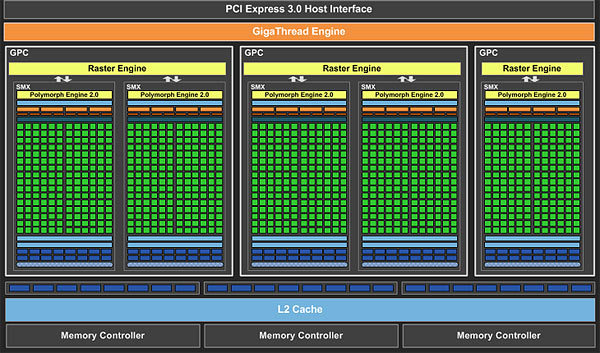
The Geforce GTX 660’s memory controller supports mixed density memory module operation. This feature allows to outfit the board with 2GB of memory (instead of 1.5GB) while utilazing a 192-bit memory interface.
The memory controller logic divides the GTX 660’s eight memory modules as follows:
Memory Controller 1: 4 pcs: 128M x 16 GDDR5 (1GB, 16-bit mode)
Memory Controller 2: 2 pcs: 64M x 32 GDDR5 (512MB, 32-bit mode)
Memory Controller 3: 2 pcs: 64M x 32 GDDR5 (512MB, 32-bit mode)
Unlike the GTX 650, GTX 660 has GPU Boost. The card’s reference Base clock is 980MHz, but the GPU overclocks to 1GHz+ when there’s thermal and power headroom. Boost clock is 1033MHz, but higher clocks are not uncommon. The GTX 660 has a 140W TDP so one 6-pin power connector did the trick. Under load GTX 660 typically draws 115W of power in most non-TDP apps.
EVGA GTX 660 Superclocked (SC) uses dual slot cooling that looks much like the GTX 660 Ti’s cooler, well the GTX 670’s to be exact. You won’t see any difference between the coolers until you take the cooler apart. It’s a blower style cooler that is two slots wide.

One glance at the power and SLI connectors will in fact confirm that we’re looking at two different cards. The GTX 660 comes with one of each while the GTX 660 Ti has two of each.
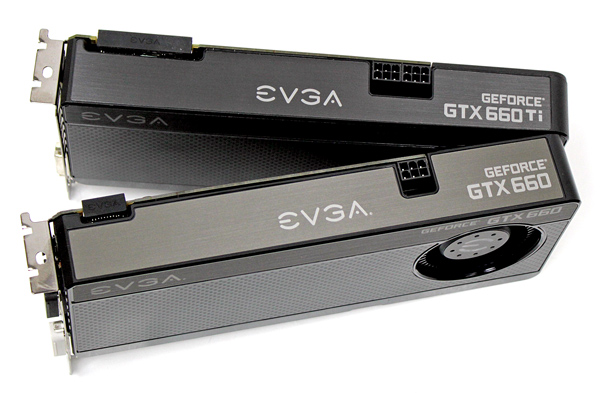
The fan was is limited to 74% RPM in order to keep noise down. No need to invent hot water - the cooler handled the card quite well. The Base clock on the Superclocked card is higher than reference, i.e. up from 980MHz to 1046MHz, but this didn’t prove too troublesome for the cooler and it ran quiet even under load.
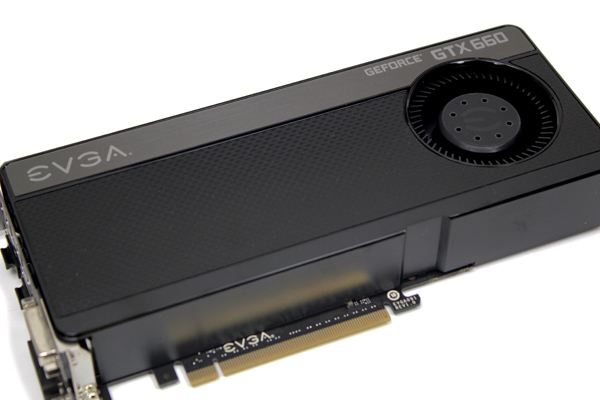
The PCB is 17.3cm long while the card is 24.3cm, which is clear once you look at the card from the back.
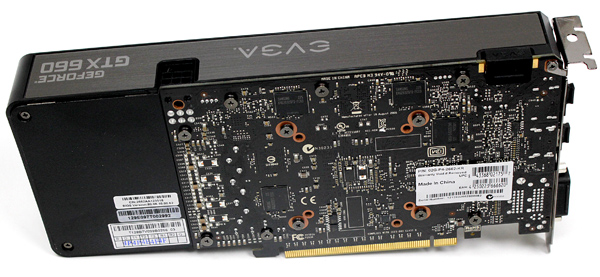
Power circuitry on GTX 660 Superclocked cards is towards the end of the PCB, exactly the opposite of how it was implemented on GTX 670 and GTX 660 Ti cards. This change required a redesign of the cooler as well.
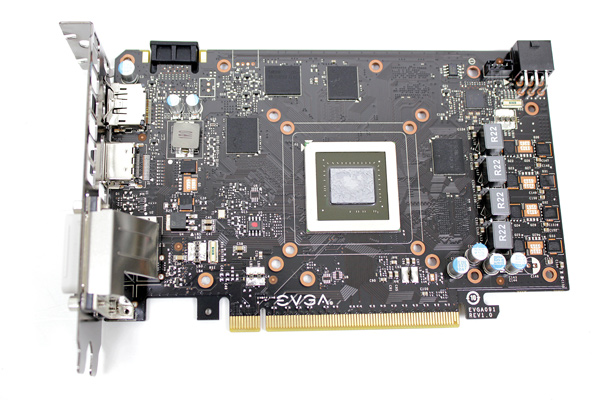
The card has a metal heatsink that cools low profile components and holds the fan as well. GTX 670/660Ti cards have a plastic extension on the card, as you can see from the picture below. The new design improved stability.
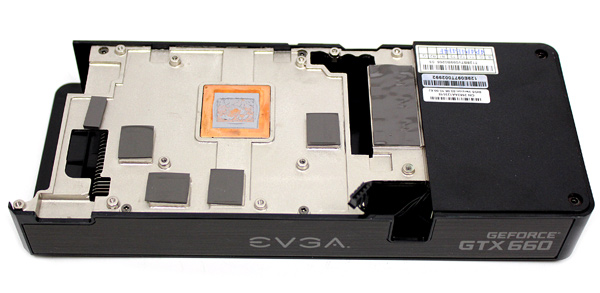
The cooler uses a single heatpipe.
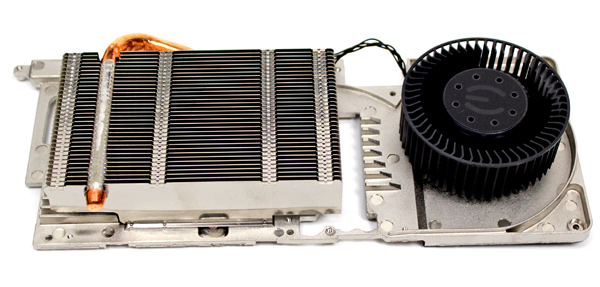
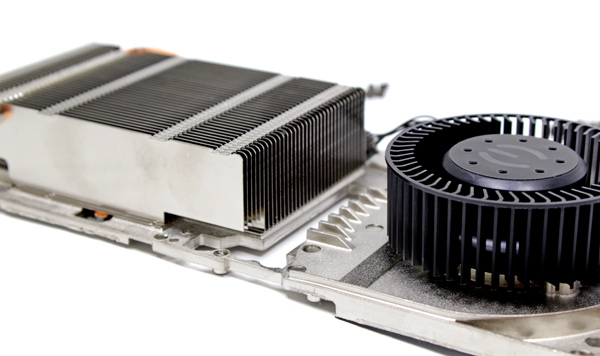
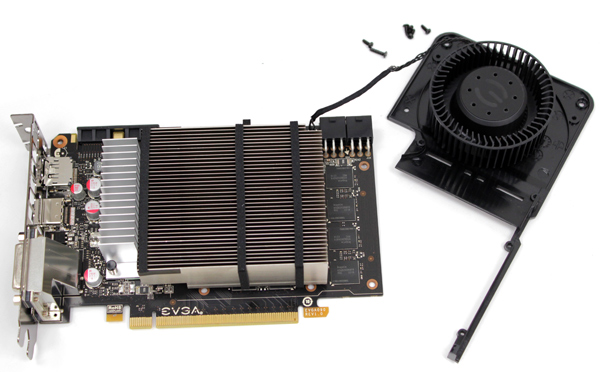
EVGA GTX 660Ti Superclocked
Almost all the cards we’ve tested so far used Hynix memory, but this time around it’s Samsung. The memory is model number K4G20325FD-FC03, meaning it’s GDDR5 specified to run at 1500MHz (6000MHz GDDR5 effectively). EVGA’s GTX 660 Superclocked packs a total of 2GB of GDDR5, in eight memory modules. Four of the modules are placed on the back.
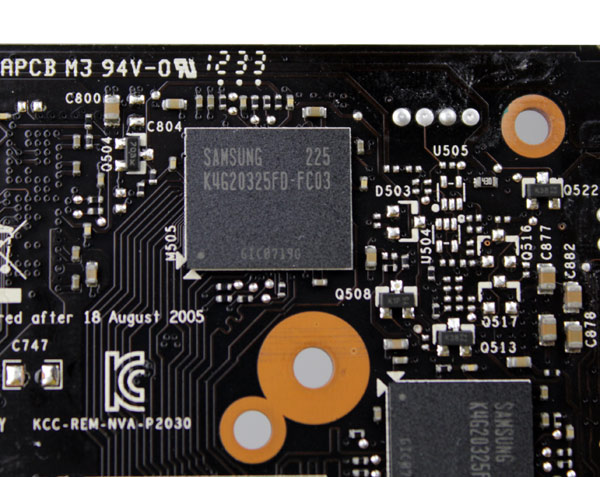
The GTX 660 has a single SLI connector, which is usual for this price segment. So, it’s possible to boost performance and use two cards in SLI mode, but not more than that.
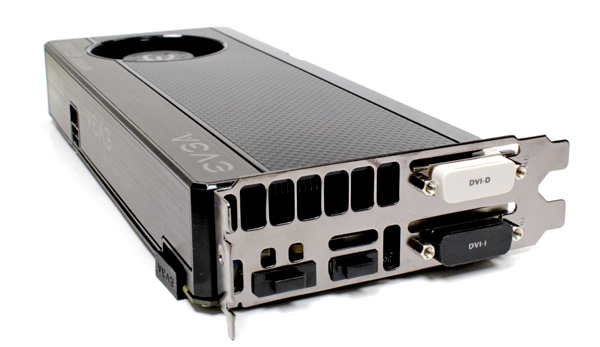
Video outs include two dual-link DVIs (only one is VGA capable) and standard HDMI and DisplayPort connectors. Note that all four outs can be used simultaneously.

Motherboard: EVGA X79 FTW
CPU: Sandy Bridge-E Core i7 3820 (3.6GHz)
CPU Cooler: Thermalright HR-02 (Thermalright-Europa Distri www.PC-Cooling.de).
Memory: 8GB ADATA DDR3 1600 XPG Gaming series
Harddisk: OCZ Vertex 2 100 GB
Power Supply: CoolerMaster Silent Pro 1000W
Case: CoolerMaster Cosmos II Ultra Tower
Operating System: Win7 64-bit
Nvidia 306.02-desktop-win7-winvista-64bit-english-beta
AMD 12-8_vista_win7_64_dd_ccc.exe
(AMD HD 7970 : 12-6_vista_win7_64_dd_ccc.exe)
(EVGA GTX 690 4GB & Gainward GTX 670 Phantom SLI : 301.34-desktop-win7-winvista-64bit-english-whql)
3DMark 11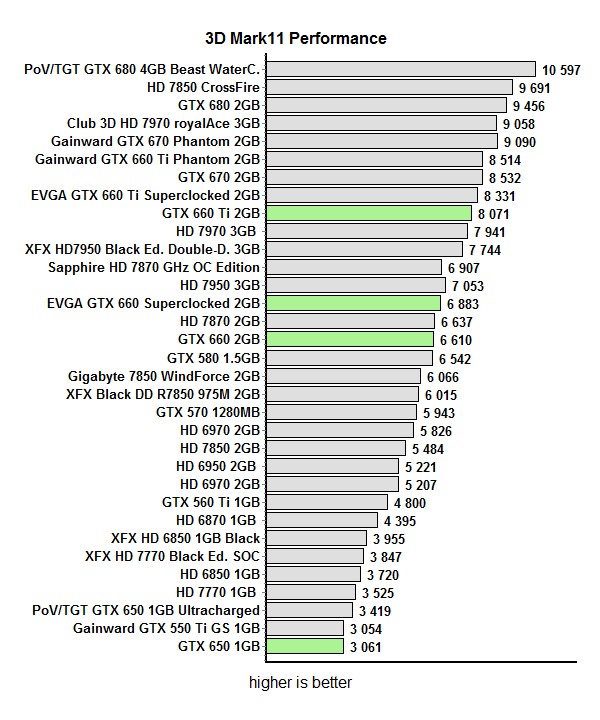
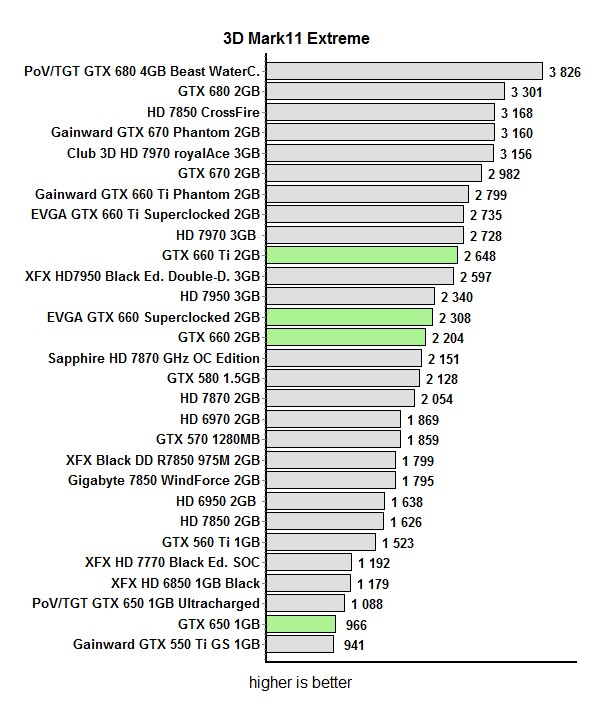
Crysis 2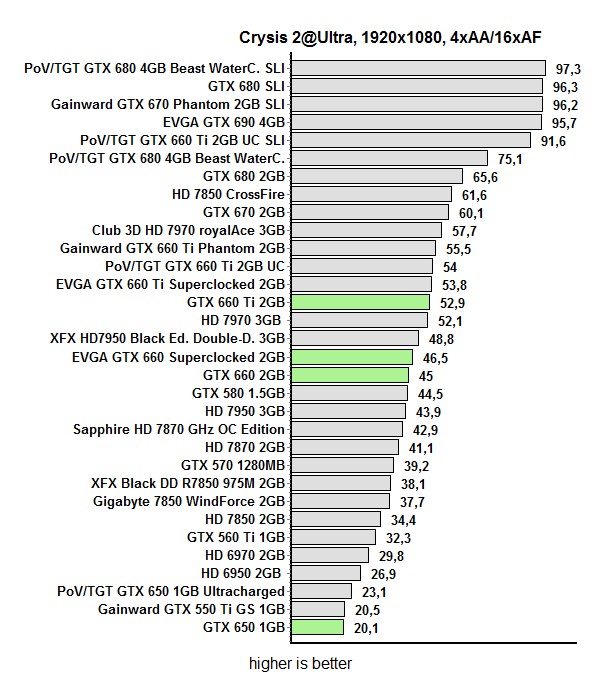
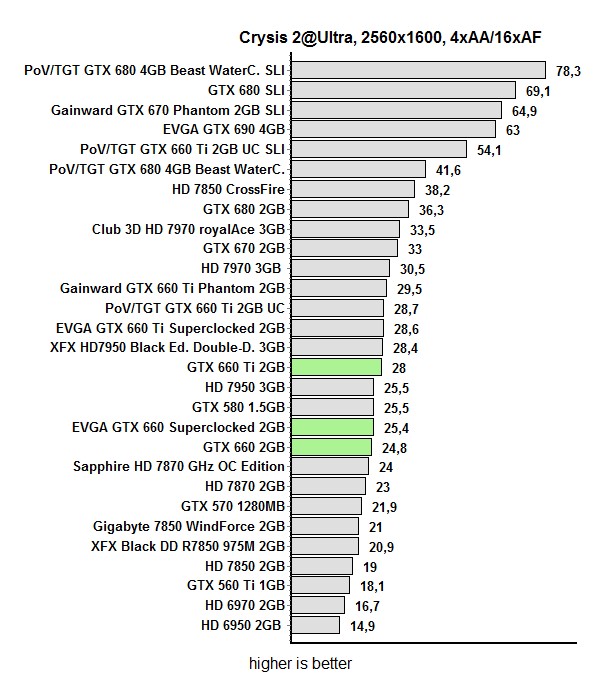
Metro 2033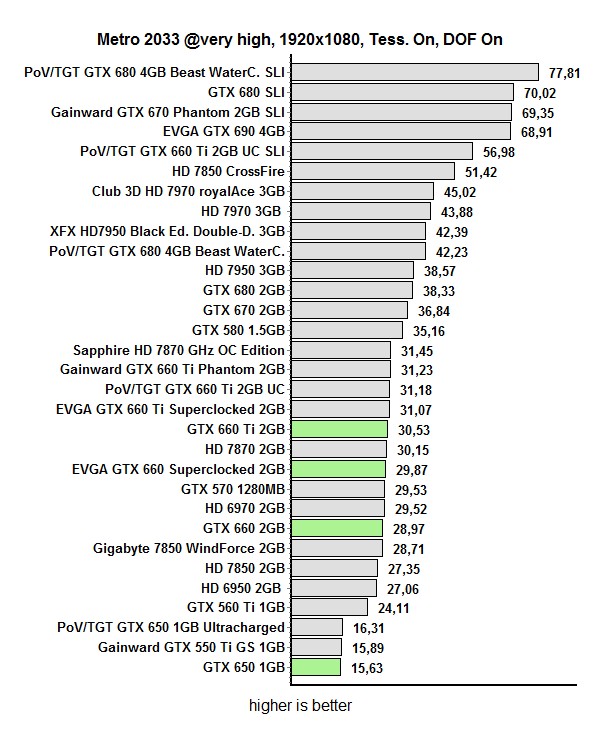
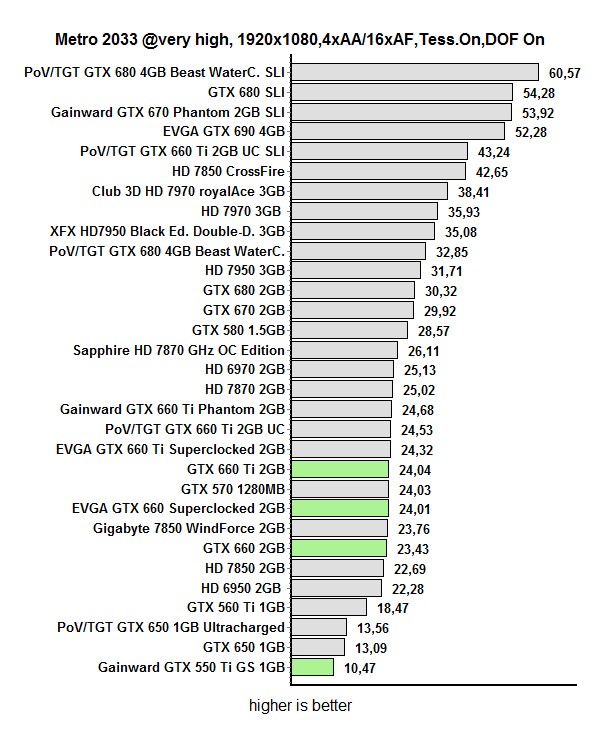
Aliens vs Predator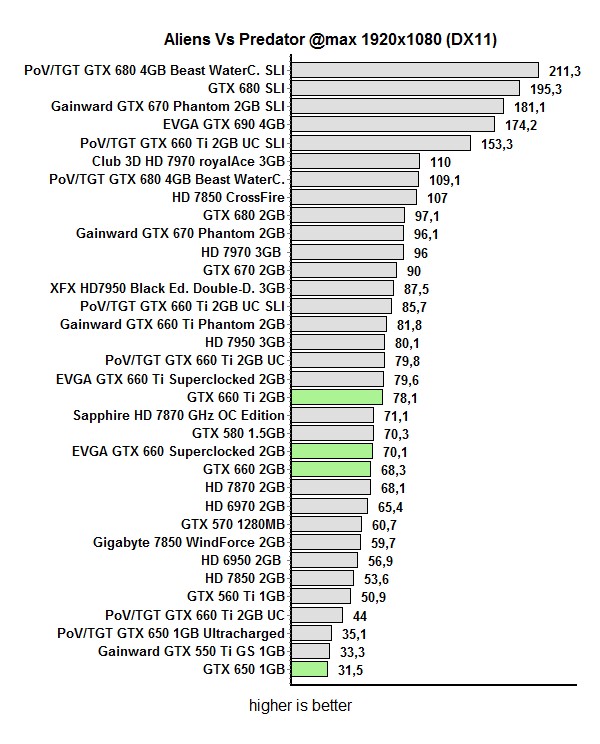
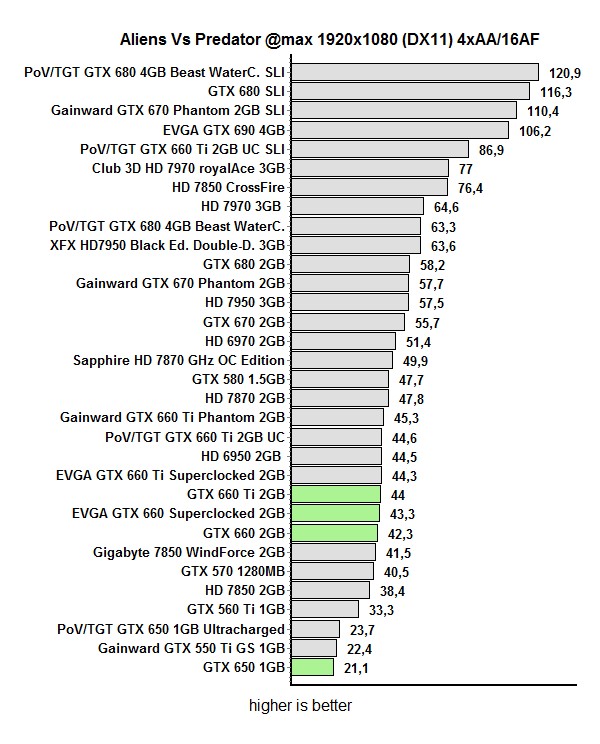
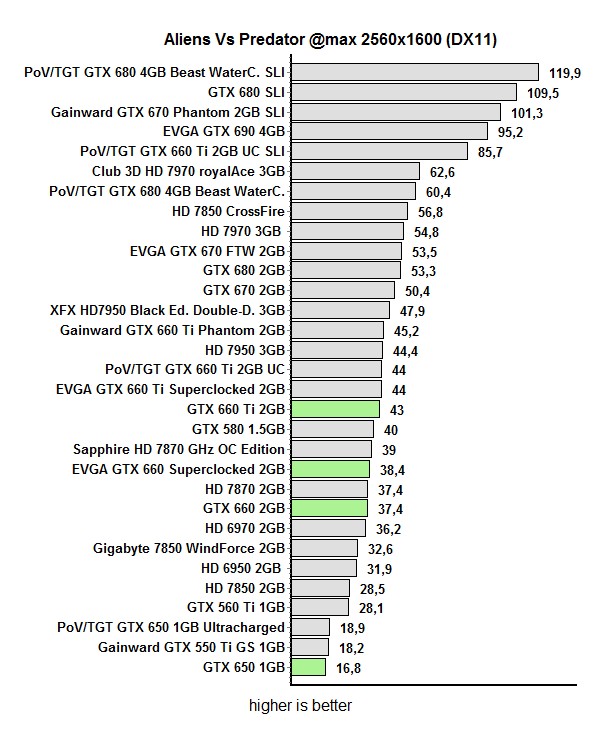
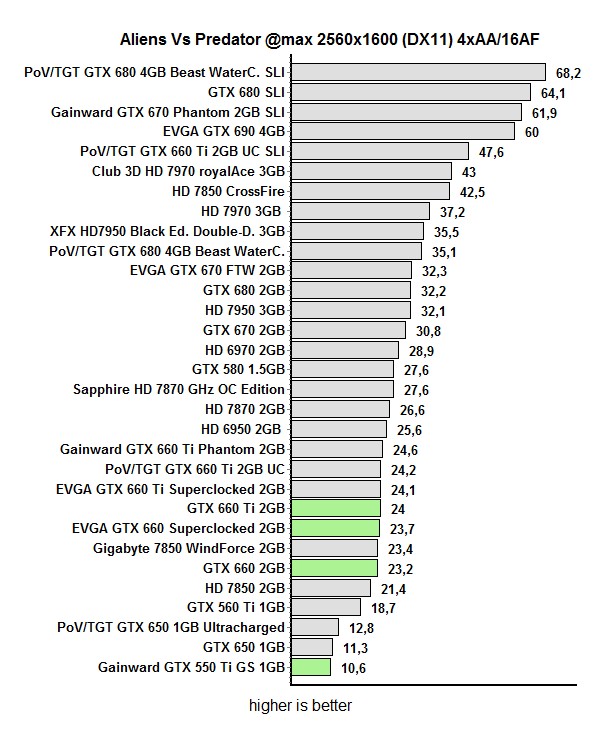
Unigine Heaven
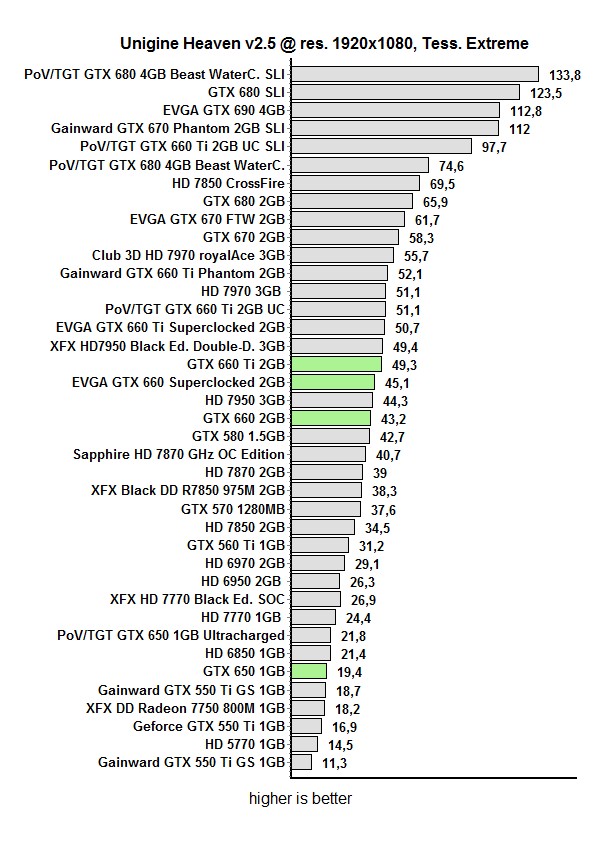
We increased our Thermal Target to 110%, which is the maximum PrecisionX allows. We managed to increase GPU clock offset by additional 65MHz. Seeing as how the GPU is already factory overclocked to 1046MHz, this is quite nice. EVGA GTX 660 SC ran at maximum 1189MHz.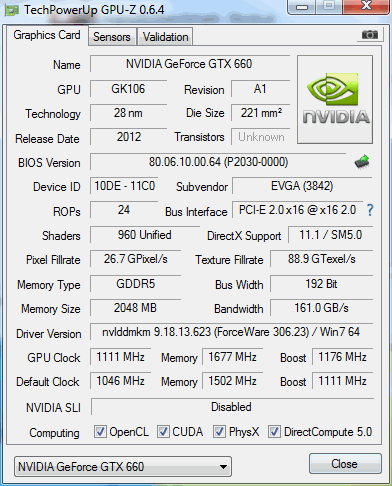
Note that the fan was in Auto mode throughout the test. We did speed up the fan to its maximum but that did not help gain any higher on long term stable GPU clock. We overclocked the memory by another 175MHz (700MHz effectively).
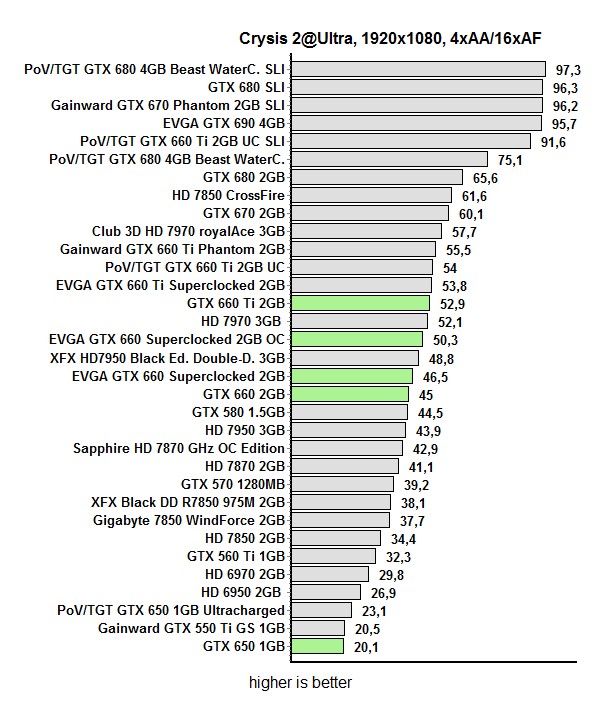
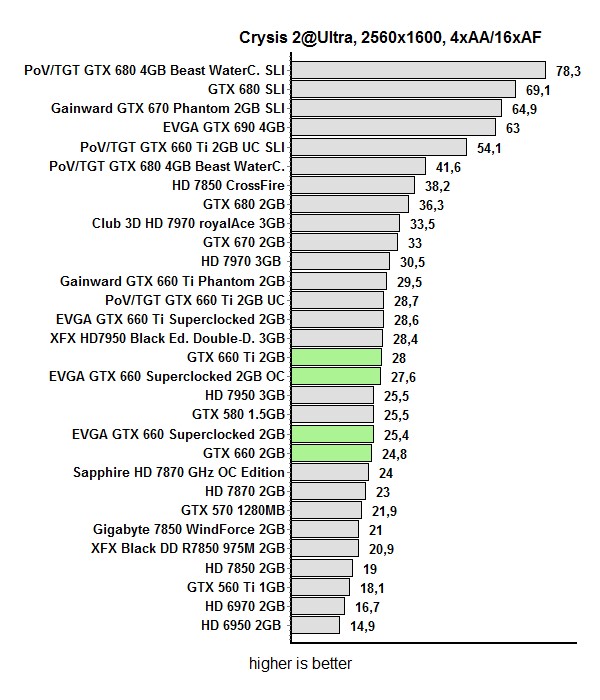
The GTX 660 Superclocked’s cooler was made using the GTX 670’s cooler as basis. EVGA improved the design by throwing in a heatpipe and cooling low profile components with a heatsink. The heatsink stretches across the entire card, which toughened the card up and provided a fan bracket at the same time. 
We couldn’t hear the fan not even under heavy load. In idle it is almost inaudible.
Intensive gaming sessions saw the card go up to 81°C. We’re glad EVGA kept noise levels down by letting temperatures go slightly higher. The GPU is designed to operate safely up to 98 Celsius degrees, which coupled with GPU Boost mean there’s no danger of overheating.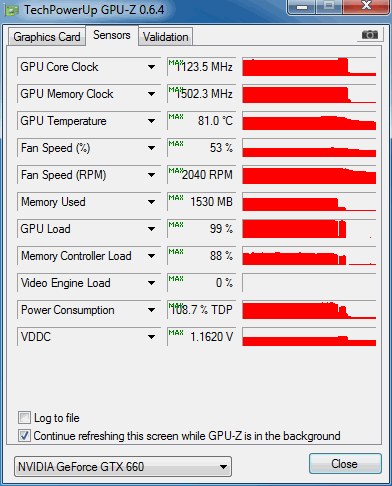
If you want a cooler card you’ll have to speed the fan up manually, since it won’t go over 2100RPM in AUTO mode. The fan is limited to 74%RPM, most likely to keep the noise down. Anything beyond 74%RPM, which you’ll most certainly hear, would’ve been pointless. As you can see, increasing the fan RPM may knock the temperature to about 70°C.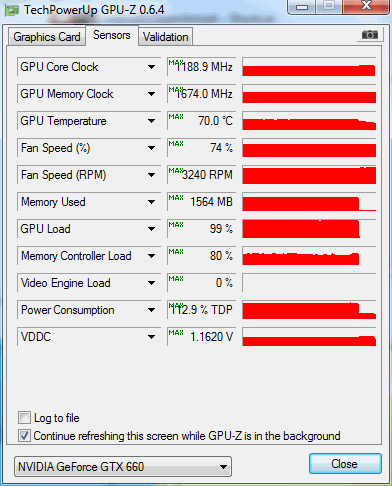
Consumption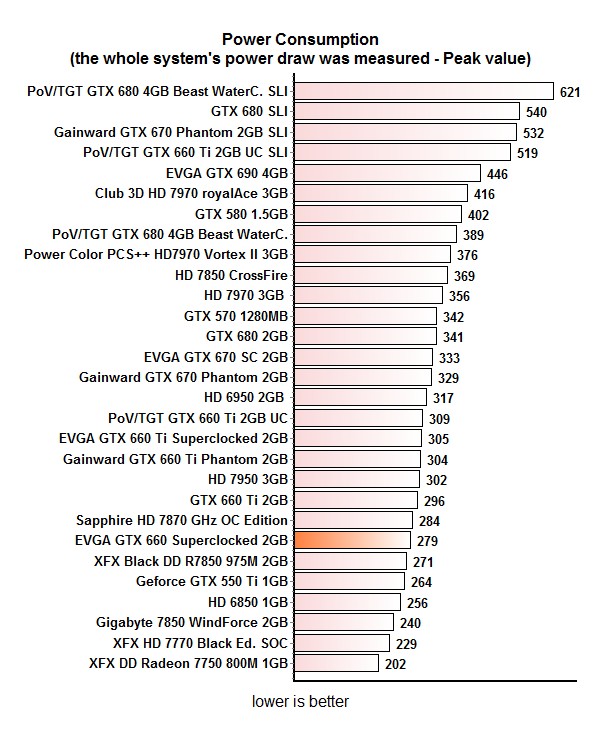
EVGA GTX 660 Superclocked is, as the name suggests, a factory overclocked card, which gives it a slight advantage over the reference GTX 660 right out of the box. For a card priced at about €220, it spews out quite nice performance at 1920x1080, in most games and with detail settings maxed out. AMD’s competitor, the HD 7870, turned out a bit faster, but it may depend on the games of choice. The GTX 660 Superclocked fared particularly well with antialiasing on and almost caught up with the GTX 660 Ti. Compared to the last generation, this is a significant performance increase.
EVGA uses dual slot cooling that looks like the reference solution but is actually tuned a bit to provide quiet operation. Although the thermals are slightly higher than we’d have liked, they’re still far from the red zone, so a worthy compromise. Our additional overclocking for the GPU and memory also went well.
EVGA GTX 660 Superclocked is a card is a great bang for buck and is sure to strike a chord with many gamers. It’s the cheapest Kepler based card that will cause serious damage and although arguably a tad overpriced, most won’t care - and rightfully so. If you’re looking for a new card to spend long winter nights with, then EVGA GTX 660 should definitely make your list.




